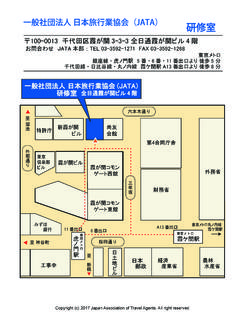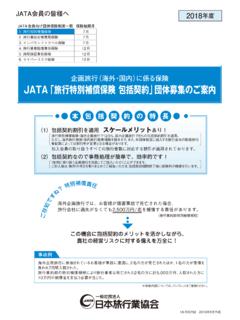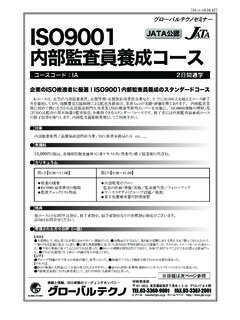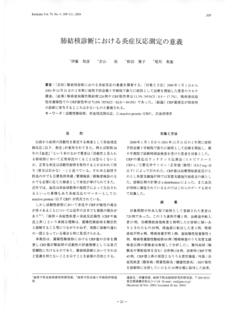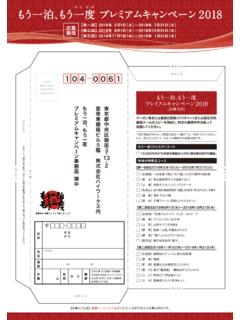Transcription of Benchmarking Hospital Performance: Six Months …
1 Benchmarking Hospital Performance: Six Months Under MS-DRGsBy J. A. Thomas & Associates ~ Table of ContentsExecutive Summary ..3 Goals of Benchmarking ..4 How CMI Impacts Reimbursement ..5 Benchmarking in More Detail ..6 Summary ..9 For More Information ..10 Coding Terms Defined ..11 Page 3In August 2007, the Centers for Medicare and Medicaid Services (CMS) instituted major changes to the nation s healthcare coding system by which hospitals receive Medicare reimbursement. The intent of the final rule from CMS was to have provider organizations reflect more accurate-ly the severity of patient illness within their Medicare population. Why does coding for severity of illness matter? The more severe the patient s condition, the longer the patient stays in the Hospital and con-sumes more resources, which produces a higher case mix index (CMI), which translates into more reimbursement for hospitals.
2 (see graphic at end: How CMI Impacts Reimbursement)The result of this overhaul was the creation of the Medicare Severity Diagnostic Related Group (MS-DRG) coding system, which became ef-fective October 1, 2007. Since then, the MS-DRG system has raised the bar for physicians to document with more specificity the principal patient diagnosis and comorbidities, or other conditions increasing severity, so that coders can code these diagnoses accurately and hospitals can receive higher payments for more severe cases. Executiv e SummaryThis Benchmarking report - Benchmarking Hospital performance : Six Months Under MS-DRGs tracks progress for 188 J. A. Thomas & Associ-ates ( jata ) client hospitals using the company s Compliant Documen-tation Management Program (CDMP ). Representing 194,620 cases, the report is based on the analysis of six Months of data that was reported during the Months of October through March of 2007 and compares that data to CMS projections.
3 CMS issued MEDPAR projections in 2007, from data reported in 2006 from hospitals throughout the United States. These MEDPAR projec-tions were meant to give hospitals a sense of how they would fare under the new coding system, whether or not they had any focus on improved documentation. Benchmarking Hospital Performance: Six Months Under MS-DRGsBy J. A. Thomas & Associates Page 4 While this report looks exclusively at jata Hospital clients, the find-ings are important for chief financial officers at all hospitals who want to ascertain the impact of MS-DRG on Hospital case mix index and profil-ing. First, this is the only report of its kind showing how hospitals are faring under MS-DRG in real-time (CMS MEDPAR data is a projec-tion based on older data). Second, this report demonstrates that hospitals can not only survive under MS-DRGs, but can also prosper under the Medicare reimbursement system.
4 Report Results: Overall, jata clients are achieving at least a 5 percent higher overall CMI than projected by CMS. Most notably, when one looks at Medical CMI, which indicates the most vigorous improvement in documentation, jata clients have a 10 percent higher CMI versus CMS MEDPAR. When looking at Major CCs (MCC) a method to identify diagnoses that significantly increase expected resource consumption the overall jata client Medical MCC rate is 14 percent higher than MEDPAR, and the surgical MCC rate is 19 percent higher than of BenchmarkingPerformance benchmarks are meant to gauge how well hospitals are executing relative to MEDPAR. For our clients, these performance benchmarks enable them to compare themselves to hospitals with similar bed size and annual discharge numbers. In the future, as we refine our peer group comparisons, you will see how hospitals are performing compared to others, including teaching hospitals or transplant centers.
5 These benchmarks are not simply meant for bragging rights. Benchmarks are also a useful tool to identify opportunities for documentation improvement or to make necessary changes in the workflow or adjustments in the program that would result in even greater stated, accurate clinical documentation improvement is critical to Hospital performance : Hospital and physician profiling, quality measures, patient safety, case mix index and reimbursement. Finally, in each category below, there are top-performers those hospitals that are in the top 20 percentile in each tracking category and therefore, serve as a Best Practice group. Not only are these hospitals outperform-ing CMS projections, but they are outperforming their How CMI Impacts ReimbursementEvery incremental increase in the case mix index impacts a Hospital s revenue.
6 The blended rate is an assigned rate from CMS for each Hospital based on factors such as where hospitals are located and labor costs. Medicare discharges mean number of cases that qualify for Medicare in any given month , or on average. As a Hospital CMI improves primarily through better clinical documentation Hospital reimbursement x Blended Rate = Revenue ACurrent CMI: Medicare Revenue: $97,490,774 Blended Rate: $9,043 Medicare Discharges: 5,615 CMI INCRCMIMONTHLY IMPROVEMENTANNUAL IMPROVEMENT3-YEAR IMPROVEMENT3% $243,727 $2,924,723 $8,774,170 5% $406,212 $4,874,539 $14,623,616 7% $568,696 $6,824,354 $20,473,063 10% $812,423 $9,749,077 $29,247,232 12% $974,908 $11,698,893 $35,096,679 Blended Rate supplied by HospitalPage 6 Benchmarking in More De tail The graphic illustrations below show 1) the CMS MEDPAR projections, 2) how our overall clients are doing relative to MEDPAR and 3) how best practice hospitals are doing in each Analysis Overall CMI impact; jata clients hitting a CMI vs.
7 For MEDPAR, 5 percent higher than projected. Best practice hospitals have hit a CMI. ClientsJATA Best PracticeCMI Medical CMI Analysis jata clients hitting a CMI vs. for MEDPAR, 10 percent higher than projected. Best practice hospitals have hit a CMI. Medical CMI ClientsJATA Best PracticeMedical CMI Page 7CC Capture Analysis jata clients capturing 53 percent of CCs compared to 42 percent for MEDPAR Best practice hospitals up to 59 percent. CC Capture Analysis59%42%53%0%10%20%30%40%50%60%70% MedParJATA ClientsJATA Best PracticeCC Medical CC Analysis jata clients capturing 55 percent of CCs compared to 43 percent for MEDPAR Best practice hospitals up to 62 percent. Medical CC Analysis43%62%55%0%10%20%30%40%50%60%70% MedParJATA ClientsJATA Best PracticeMedical CC MCC Analysis jata clients capturing 40 percent of MCCs compared to 25 percent for MEDPAR Best practice hospitals up to 50 percent.
8 MCCA nalysis50%25%40%0%10%20%30%40%50%60%MedP arJATA ClientsJATA Best PracticeCC Page 8 Medical MCC Analysis jata clients capturing 37 percent of MCCs compared to 23 percent for MEDPAR Best practice hospitals up to 45 percent. CC Capture AnalysisMedParJATA ClientsJATA Best PracticeCC23%37%45%Medical MCC Analysis45%23%37%0%5%10%15%20%25%30%35%4 0%45%50%MedParJATA ClientsJATA Best PracticeCC Page Summary Our performance benchmarks show conclusively that a structured, effective clinical documentation program, with trained and cohesive teams and task forces, are achieving outstanding improvement for quality patient care and a Hospital s bottom line. Hospitals, however, need to manage CMI continually in order to benefit from improved reimbursement. Looking forward, we encourage our clients to continue working to keep documentation language precise, profiling accurate, CMI strong, and increase reimbursement: Continually inform and educate physicians, coders, documentation specialists, and nursing staff on evolving clinical documentation re-quirements and how to support levels of severity under MS-DRG.
9 Focus on establishing severity of illness regardless of DRG methodology. Institute concurrent intervention at the bedside rather than waiting until the time of coding for clarification. Concurrent intervention improves documentation. Analyze data and monitor CMI every month . Share results and share best practices. Telling your Hospital staff how their efforts are contributing to improved patient care and reimburse-ment is the best way to ensure continued participation and instill dedication to clinical documentation improvement. Page 10 For More InformationHospitals:Contact Joanne Webb Caroline March-Long, Chuck Buck 11 *J. A. Thomas and Associates Benchmarking only looks at inpatient acute care hospitals not Terms DefinedDRG: Diagnosis-related group (DRG) is a system to classify Hospital cases into severity groups, developed for Medicare as part of the pro-spective payment system.
10 Base DRGs are now subdivided into severity subgroups with two to three different levels of CC severity, with MCCs capturing the highest clinical severity and as a result, the most appropri-ate case DRGs: The triplet group of DRGs include:1. DRG with Major CC (MCC)2. DRG with CC3. DRG without MCC or CCCoding with a CC or MCC shows increased severity of illness, increased resource consumption and longer length of stay. CC: Under the old and new DRG system, coders establish the principal diagnosis as documented by the physician and then used CC (Compli-cations and Comorbidities) to further support severity of illness. MCC: With MS-DRG, CMS introduced Major CC (MCC) as a way to identify diagnoses present on a case that significantly increase the expect-ed resource consumption beyond that of the same case with a CC.
